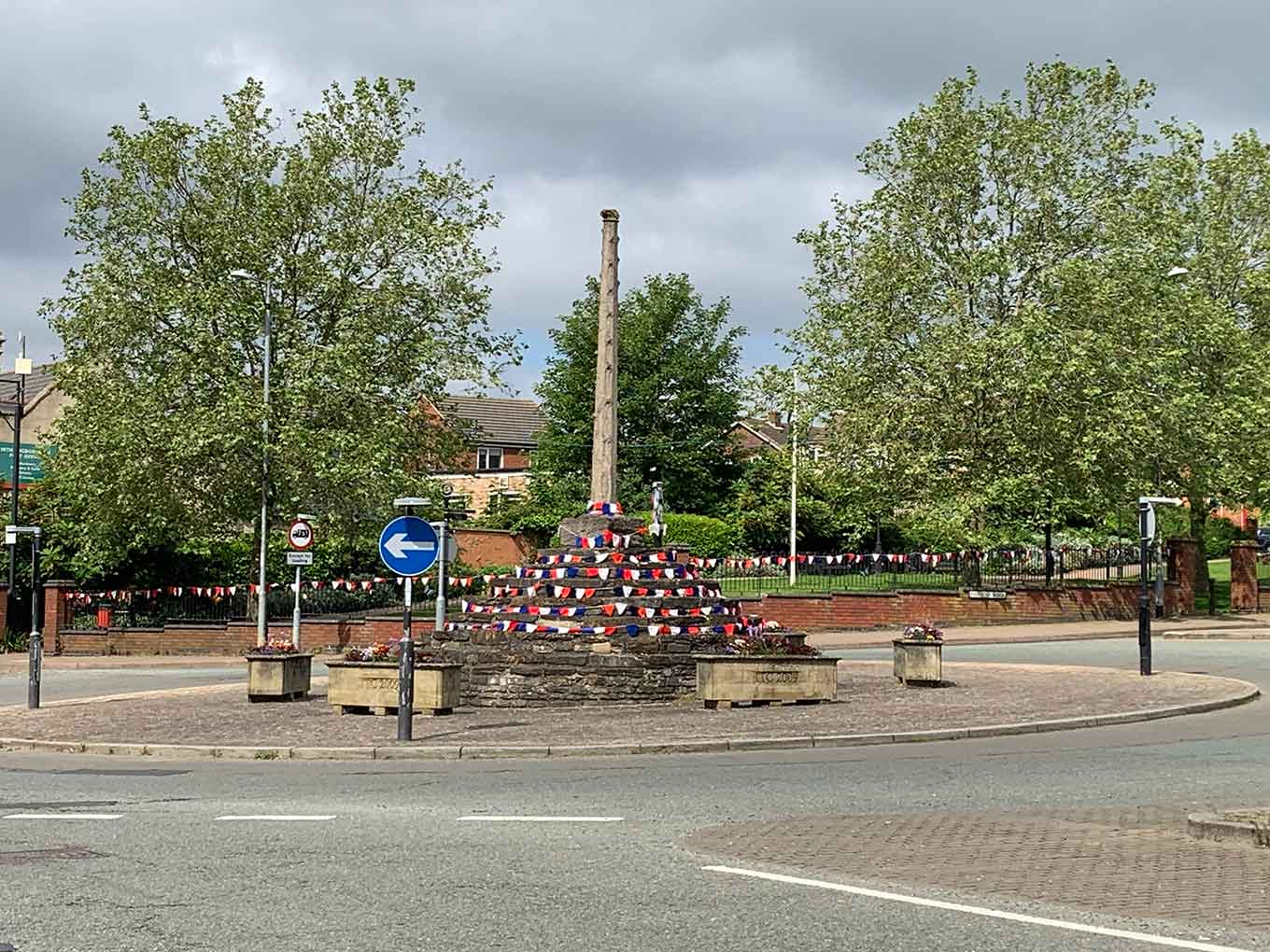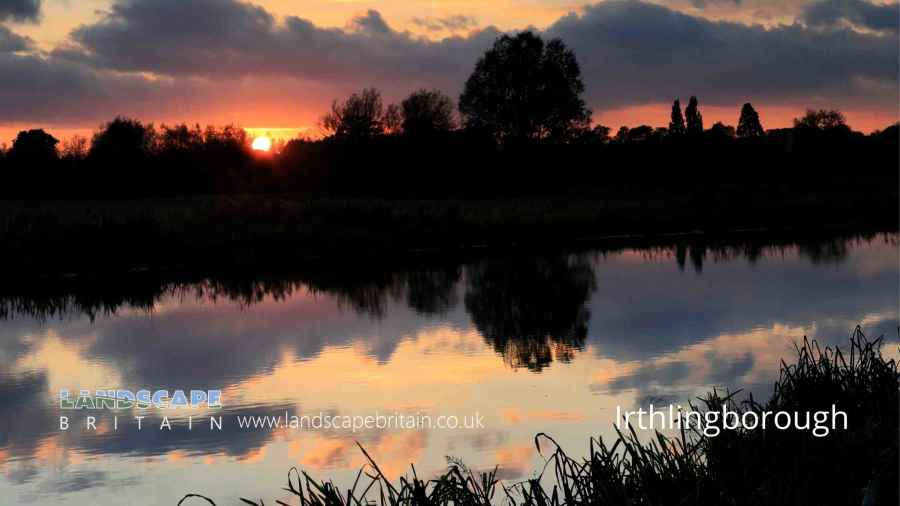
Irthlingborough's 14th Century Market Cross by Mike Gillam
Irthlingborough
A Historic Town in North Northamptonshire
Located in North Northamptonshire, England, Irthlingborough is a charming town with a rich history and unique landmarks.
St Peter’s Church: A Tower to Guide Travelers
One notable feature of Irthlingborough is St Peter’s Church, which stands proudly in the town. This church distinguishes itself from other churches in Northamptonshire with its exceptional lantern tower. The lantern tower was specifically constructed to aid travelers crossing the Nene valley during inclement weather. Its distinctive design not only adds to the architectural beauty of the church but also serves as a practical guide, providing a guiding light for those in need.
A Legacy of Ironstone Mining
Irthlingborough has a fascinating industrial past. At one time, it was home to an active ironstone mine, which played a significant role in the local economy. As part of the mining operations, a tunnel was excavated between Irthlingborough and Finedon. This tunnel served as a vital transportation route for the extracted iron ore.
The iron ore was extracted from a network of underground tunnels located approximately 80-100 feet beneath the surface. This intricate system allowed for efficient mining operations and provided access to the valuable natural resources that fueled the region’s industrial growth.
Today, the remnants of this mining heritage serve as a reminder of Irthlingborough’s industrious past, contributing to the town’s unique character and offering insight into the lives of the people who worked in the mines.
Grade I Listed Market Cross at Irthlingborough
The Market Cross at Irthlingborough is a historic and Grade I listed, scheduled monument believed to date back to the mid-14th century. Constructed from squared coursed limestone and ironstone, it features an ashlar shaft that adds to its architectural grandeur.
The cross stands on an octagonal base consisting of eight steps, providing a sturdy foundation for the rest of the structure. Atop the base, there is a square socket with octagonal shafts adorned with intricate ballflower ornamentation, showcasing the attention to detail of the craftsmen involved in its creation. Although weathered with time, remnants of a foliated capital can still be observed.
Interestingly, the shaft of the Market Cross served another purpose beyond its ornamental function. It is rumored to have been used as a standard for land measurement, highlighting its practical significance in addition to its symbolic role in the town.
In 1965, as part of a road improvement project, the entire Market Cross was relocated to the west of its original location. This careful restoration and preservation effort ensured that this historical monument could continue to be appreciated by present and future generations.
The Market Cross at Irthlingborough has been recognized for its cultural and historical importance. It is a scheduled ancient monument, standing as a testament to the town’s rich heritage.
For further information and in-depth exploration of the region’s architectural wonders, the ‘Buildings of England: Northamptonshire’ by J. Markham, as well as the comprehensive study on stone crosses in Northamptonshire, are recommended resources.
Created: 17 May 2022 Edited: 29 November 2023

Irthlingborough
Nene - conf Brampton Branch to conf Ise Details
Nene - conf Brampton Branch to conf Ise
Nene - conf Brampton Branch to conf Ise is a river in Bedfordshire
Nene - conf Brampton Branch to conf Ise takes in water from an area around 66.414 km2 in size and is part of the Nene Middle catchment area.
Nene - conf Brampton Branch to conf Ise is 20.748 km long and has been heavily modified by industry in the past.
Local History around Irthlingborough
There are some historic monuments around including:
Irthlingborough BridgeCrow Hill Iron Age hillfort with associated Iron Age, Roman and Medieval settlementsIrthlingborough bowl barrow, 760m west of Rutland LodgeThree Hills round barrowsRoman villa'Chichele College': the remains of the medieval college of Higham FerrersBarton Seagrave moats, fishponds and shrunken medieval village remainsTithe barnRaunds bowl barrowMallows Cotton deserted medieval villageBowl barrow 700m north of Woodford MillBeacon Hill motte castleMedieval Settlement of West CottonRemains of manor house and gardenRoman villaChurchyard cross in St Mary the Virgin churchyardDitchford BridgeMedieval settlement remains at WoodfordSaffron moat at Higham FerrersHigham Ferrers Motte and Bailey Castle, with Ponds, Warren and DovecoteRoman town of Irchester and preceding Iron Age settlement; including remains of the medieval hamlet of Chester on the WaterMarket cross 44m north of the Town HallGreat Lodge moated site, Higham Park.Wildlife in and Around Irthlingborough
Mammals found in Irthlingborough
There have been 24 species of mammals recorded in the irthlingborough area.
| American Mink (Neovison vison) |
| Brown Hare (Lepus europaeus) |
| Brown Rat (Rattus norvegicus) |
| Common Shrew (Sorex araneus) |
| Domestic Cat (Felis catus) |
| Badger (Meles meles) |
| Brown Long-Eared Bat (Plecotus auritus) |
| Chinese Barking Deer (Muntiacus reevesi) |
| Daubenton's Bat (Myotis daubentonii) |
| Fallow Deer (Dama dama) |
Tap here for more mammals found in and around Irthlingborough
Birds found in Irthlingborough
There have been 50 species of birds recorded in the irthlingborough area.
| American Wigeon (Anas americana) |
| Bar-Headed Goose (Anser indicus) |
| Brent Goose (Branta bernicla) |
| Cape Teal (Anas capensis) |
| Chestnut Teal (Anas castanea) |
| Baikal Teal (Anas formosa) |
| Bittern (Botaurus stellaris) |
| Canada Goose (Branta canadensis) |
| Carolina Wood Duck (Aix sponsa) |
| Common Sandpiper (Actitis hypoleucos) |







